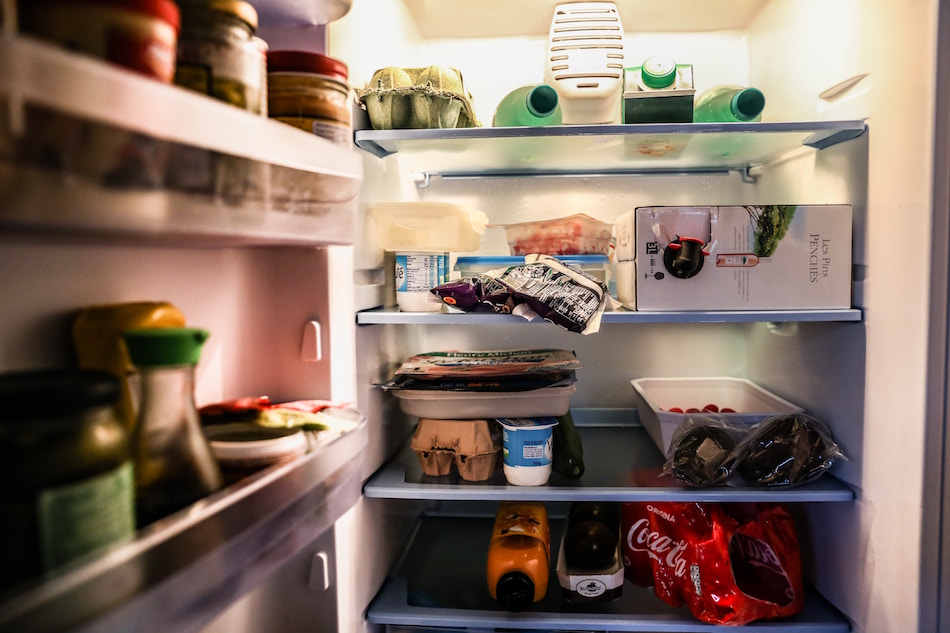Hidden Hazards of the Office Fridge

If you think that the biggest office fridge hazard is people pinching your cheese and pickle sandwiches, then think again. Food poisoning can also be a major risk, so that’s why we’ve put together our key fridge safety tips for the workplace. Pus we’ll also tell you how to get your hands on our free refrigerator thermometer, so keep reading…
1. Is the fridge working? — just because the light comes on and it feels cold, doesn’t mean that the fridge is working. What matters is that it’s at the correct temperature. Fridge foods — especially ready-to-eat items — should be chilled below 8 Degrees Celsius (and preferably at 4 or 5 Degrees Celsius). Why? Because this will help to slow down the multiplication of bacteria. Bear in mind that food already contains bacteria and if it gets contaminated further, this will multiply roughly every 20 minutes in a refrigerator that’s too warm. This means that food made in the morning and eaten at lunchtime could already have acquired hundreds of thousands of the little rogues. Scary thought, but even scarier is the fact that it might only take ten bacteria to make you ill. That’s why you need to check the temperature regularly with our free fridge thermometer.
2. Is all food stored correctly? — office fridges are often short of space with everything cramped together, so it’s absolutely essential that it’s all properly stored. This means clean, covered, air-tight containers, not open bowls or plastic bags. So make sure that everyone in your team stores their food in Tupperware-style dishes and ideally provide some spare containers for them too. Additionally, make sure that cheese, yoghurt and cooked meat are on the top and middle shelves, and that raw meat and fish are on the bottom shelf, so that they don’t drip onto other items. As a precaution, label every single shelf so that people know where to store things.
3. Is the fridge clean? — often people are so busy with their jobs that no one takes responsibility for fridge cleanliness. So it might be a good idea to assign this task to a willing colleague or alternatively, create a fridge cleaning rota. Ideally, the fridge should be emptied and properly washed once a month, or better still, once a week. However, make sure that you don’t use any overpowering cleaning products that could affect the taste of the food.
4. Is any food out-of-date? — if no one is taking responsibility for your fridge, then chances are that you’ll find a peanut butter sandwich that’s been lingering at the back since Duran Duran hit the charts. Obviously, mouldy, rotting food is a health hazard, plus it also takes up precious fridge real estate. So put a note above the fridge saying that out-of-date foods will be thrown away once a week, then make sure that it’s done.
By now, it’s probably clear to you that the best way to keep your fridge safe is to assign this task to a team member. Your official “Fridge Safety Officer” will be responsible for checking the temperature regularly, throwing away old foods, cleaning the fridge, and making sure that everything is sealed in containers and on the right shelf.
When it comes to food poisoning, prevention is everything. Yet often in workplaces, people assume that someone else will take care of the fridge, with the result being that no one does. So appoint a Fridge Safety Officer and that way, your refrigerator will be more pleasant, more spacious and most of all, safer.
We’ve got a gift to get you started in your journey to a safer office fridge. Claim your free fridge thermometer before they run out.
Want to learn more about Food Safety, Health & Safety or First Aid? Ask us about one of our accredited courses.
You might also like:
Food hygiene for dummies.
Five good reasons to train in First Aid.
Which First Aid course? Public, Emergency or First Aid at work?




